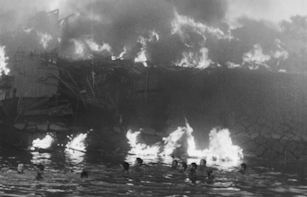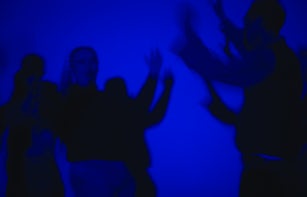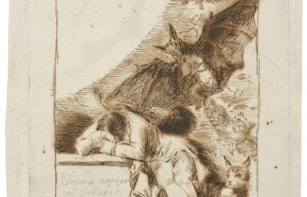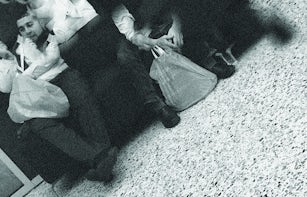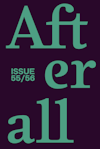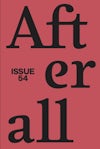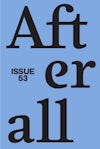
Issue 50
Autumn / Winter 2020
Editors: Ute Meta Bauer, Amanda Carneiro, Nav Haq, Amber Husain, Mark Lewis, Adeena Mey, Charles Stankievech.
Founding editors: Charles Esche, Mark Lewis.
Table of contents
Contextual Essays
- Why Is It So Difficult to Love the World? – Ute Meta Bauer & Ana Salazar
- Dark Matter, or the Infinite Reservoir of Black Swans – Nav Haq
- Virtual Tower, ‘Virtual’ Pit: On Potentiality and the Status of Unrealised Art – Amber Husain
- Repurpose and Remake – Adeena Mey
- The White Building: Building a Community, a City and Art – Vuth Lyno
- Sleep of Reason: An Atlas of the Philosophical Imaginary – Dehlia Hannah, Ala Roushan, Nadim Samman & Charles Stankievech
Artists
Foreword
Written by Mark Lewis, for the editors
Amy Hempel’s very short eponymous story (it’s barely eight lines long) from her recent collection Sing to It: New Stories (2019), opens with the following: ‘At the end, he said, No metaphors! Nothing is like anything else.’ Nothing is like anything else. Some years ago, a friend shared an odd experience she had on a plane, flying from Toronto to Saskatoon, Saskatchewan. She was sitting next to a young man from Pakistan, aged around 22 or 23, en route from Karachi to take up a graduate scholarship at the University of Saskatchewan. He had the window seat; my friend had the aisle. As they were getting close to their destination, the young man tapped my friend on the shoulder and asked: ‘What is all that whiteness down there?’ My friend leaned over and looked out the window and of course everywhere down below was carpeted with snow. When I have retold this story, people have usually thought it can’t be true as they assume almost everyone, especially those travelling to Canada for postgraduate studies, would know what snow was, how it looked, that it was white. And sometimes I have thought that maybe I have got the story wrong, that I’ve forgotten a detail or indeed made something up.
But recently I was flying to Saskatoon, probably on the same scheduled flight as my friend and the young man from Pakistan. I was going to Saskatchewan to make a film, and as I needed lots of snow, I was travelling there in the middle of winter. As the plane approached Saskatoon, I too looked out the window and for the first time I think I understood why that young man had been puzzled by what he saw. There was indeed snow, lots of it, everywhere. But there was a strangeness to what I saw and this was not simply due to the fact of snow. Saskatchewan is almost completely flat (there are no mountains, barely any hills) with a tiny population (it’s exactly five times the size of England with less than one million people) and there are few cities and towns. Looking out the plane window, the whiteness seemed to me to go on and on forever with little articulation. It didn’t really look like ‘snow’ at all. Rather it appeared as a strange and unworldly whiteness, with its own peculiar perspectival and spatial laws. It was strange too because it was not completely unfamiliar: there were still a few roads, buildings, occasional trees, etc., but nothing looked exactly right. A modern populated region almost completely covered with snow is not the same as an empty Arctic expanse. And if I wasn’t so accustomed to the sight, I might well have asked the person next to me what it was I was looking at.
In March, the initial experience of the Covid-19 pandemic – international lockdowns, a disaster mise-en-scène – felt to me a little like going to bed one night, with everything outside clearly articulated, sharp contours as normal, and waking up and realising that while I slept the world had been carpeted with a deep layer of snow. Many of the usual markings, divisions between spaces, recognisable signs of life were gone. In this way there had been a kind of magical defamiliarisation of the earth and all its formal, social and political consequence. But in some ways, many things still looked the same – unfamiliar while remaining somewhat familiar. The Russian formalist Viktor Shklovsky describes this device – ostranenie – as the quintessential art effect, the work in the work of art – the work, that is, of making the world, or some aspect of it, strange. When looking at a work of art, you know what you are looking at, but somehow you also don’t. Recognition, misrecognition is a trope, given substantive value by Sigmund Freud in his description of disavowal as the work of the unconscious in the face of a different kind of strangeness – sexual difference. With both defamiliarisation and strangeness, certain things – difference, history, repression, etc. – are revealed, often as if for the first time. Or at least they can be if one pays close attention. It’s an effect that can be both political as well as psychoanalytical. It’s what Freud, in another text, called the Unheimlich, the uncanny.
Purchase
The publication is available for purchase. If you would like specific articles only, it is also available individually and to be downloaded as PDFs.
Purchase full publication
Buy via University of Chicago Press
Buy via Central Books
Purchase individual articles
Buy via University of Chicago Press
